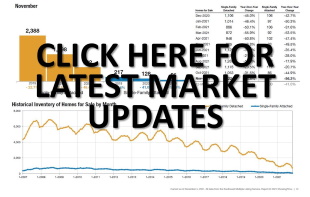RE/MAX National Housing Report May 2021
Red Hot Market Cools Slightly, Stabilizing Prices
DENVER — The typical May ramp-up in home sales didn’t happen last month, as sales dipped 0.2% from April and home prices were uncharacteristically flat in the report's 53 metro areas.
Also defying seasonal trends was a 7.1% drop in listed homes at a time of year when active inventory is normally building for peak summer sales months. But two other metrics confirm that the frenzied sellers market marches on: Months Supply of Inventory dropped to 1.1 months and homes changed hands in a mere 28 days. Both are records in the 13-year history of the report.
“The first small step toward a more balanced market may have appeared in May, as home prices finally stabilized after a long run of sustained increases. At the same time, cooling sales defied typical April-May trends and report records were set for low inventory and fast turnaround times,” said Nick Bailey, President, RE/MAX, LLC.
With year-over-year comparisons heavily skewed by the pandemic, April-to-May averages for 2015-2019 show what is typical:
• While May 2021 home sales declined 0.2% month over month, 13.9% is the 2015-2019 average gain from April to May. Year over year, sales were up 53.4%.
• May’s Median Sales Price of $320,000 was the same as April’s, compared to the typical April-to-May increase of 3.2%. Year over year, May’s price is 17.0% higher than May 2020’s $273,498.
• Instead of the 7.1% decline from April to May, inventory typically grows by 1.8%. Year over year, inventory was down 43.0%.
Bailey continued: “May had a little something for everyone – with buyers finally getting a break on prices, sellers benefiting from a lack of competitive inventory, and both sides served by speedier listing-to-contract periods. The market still tilts mainly toward sellers, but we could be seeing the first signs of a return to more balance after the hottest stretch of sales in years. Ultimately, that would be good for both buyers and sellers.”
May’s average Days on Market from listing to going under contract of 28 shaved four days off of April and represented a faster sale by 18 days compared to May 2020.
May’s 1.1 Months Supply of Inventory compares to 1.3 in April, and 2.9 in May 2020.
Highlights and the local markets leading various metrics for May include:
Closed Transactions
Of the 53 metro areas surveyed in May 2021, the overall average number of home sales is down 0.2% compared to April 2021, and up 53.4% compared to May 2020. Leading the year-over-year sales percentage increase were Detroit, MI at +136.6%, San Francisco, CA at +135.7%, and Miami, FL at +131.8%.
Median Sales Price – Median of 53 metro median prices
In May 2021, the median of all 53 metro Median Sales Prices was $320,000, flat to April 2021 and up 17.0% from May 2020. No metro areas saw a year-over-year decrease in Median Sales Price. Fifty metro areas increased year-over-year by double-digit percentages, led by Boise, ID at +40.7%, Augusta, ME at +37.8%, and Phoenix, AZ at +32.9%.
Days on Market – Average of 53 metro areas
The average Days on Market for homes sold in May 2021 was 28, down four days from the average in April 2021, and down 18 days from the average in May 2020. The metro areas with the lowest Days on Market included a four-way tie between Boise, ID, Seattle, WA, Omaha, NE, and Nashville, TN at 12. The highest Days on Market averages were in Miami, FL at 85, Des Moines, IA at 83, and New York, NY at 79. Days on Market is the number of days between when a home is first listed in an MLS and a sales contract is signed.
Months Supply of Inventory – Average of 53 metro areas
The number of homes for sale in May 2021 was down 7.1% from April 2021 and down 43.0% from May 2020. Based on the rate of home sales in May 2021, the Months Supply of Inventory decreased to 1.1 compared to 1.3 in April 2021, and decreased compared to 2.9 in May 2020. A six months supply indicates a market balanced equally between buyers and sellers. In May 2021, of the 53 metro areas surveyed, zero metro areas reported a months supply at or over six, which is typically considered a buyer’s market. The markets with the lowest Months Supply of Inventory were a four-way tie between Albuquerque, NM, Raleigh-Durham, NC, Denver, CO, and Seattle, WA at 0.4.
Feel free to contact me and I can help break down exactly what these numbers mean for our local market and for your neighborhood. And lastly, If you or anyone you know is thinking of buying or selling a home - please call or email me. I'm here to help!
Peter Veres
Associate Broker,CRS,ABR,CLHMS,SRES
Elite Asset Management Team - RE/MAX Elite
Cell: 505-362-2005










